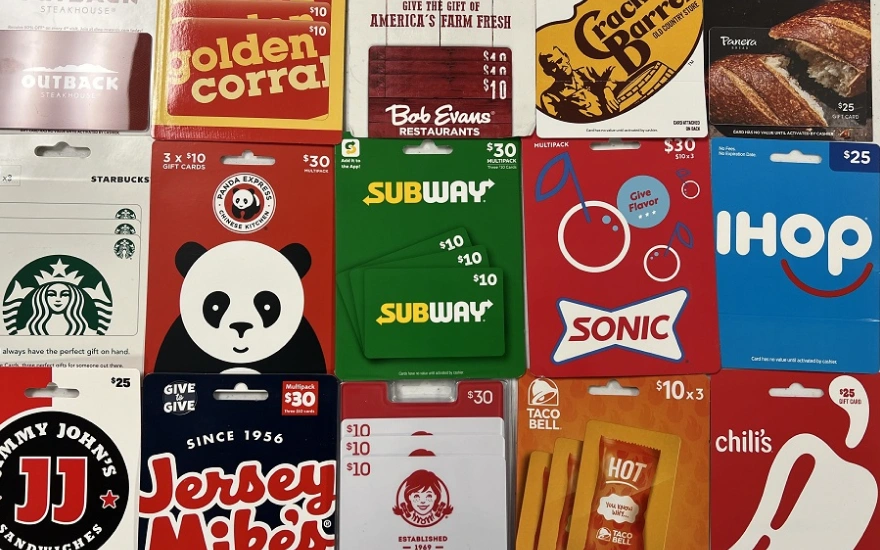How to Navigate Dietary Restrictions in Your Restaurant

Dietary restrictions are more popular than ever before, and restaurants need to adapt accordingly. At roughly 17.1% of the US population (or a little over 1 in 6), more Americans than ever before report being on a special diet, according to data released by the CDC.
It’s important to keep in mind that this is a growing trend in the restaurant industry, as are the rise of food allergies. The Centers for Disease Control and Prevention reports that the prevalence of food allergy in children increased by 50 percent between 1997 and 2011.
As a restaurant manager or owner, it’s important for you to be able to navigate all of these dietary restrictions to avoid losing business.
What are Common Dietary Restrictions?
It’s difficult to solve any problem without knowing exactly what the problem is in the first place. There’s a wide variety of dietary restrictions, and catering to the ones that are most popular is a good strategy for retaining business.
According to HealthLine, some of the most popular dietary restrictions include:
- Lactose Intolerance
- Gluten Intolerance
- Nut-free
- Vegetarianism
- Veganism
- Diabetes
The exact definition of a “dietary restriction,” however, varies. Some people are restricting sugar intake and carbohydrates in an effort to lose fat; others are avoiding gluten due to Celiac disease; and some are avoiding specific meats for religious purposes. So, some people may see a dietary restriction as an allergy, while others may see it as more of a preference. Either way, a dietary restriction is a food or group of foods that your customer is actively trying to avoid.

Additionally, the most common food allergies are for:
- Cow’s milk
- Eggs
- Tree nuts
- Peanuts
- Shellfish
- Wheat
- Soy
- Fish
How to Navigate Dietary Restrictions
1. Menu Planning and Design
One of the quickest and easiest ways to plan your menu around food-sensitive individuals is to clearly highlight, in some way, which meals abide by those dietary restrictions. For instance, in many restaurants, it’s becoming increasingly common to see some sort of symbol next to the meal, like an asterisk. A leaf can denote that the product is meat-free, a crossed-out glass of milk can mean that the product is dairy-free, and a “GF” symbol can mean gluten-free.
Penn State has a fantastic guide on the most common symbols and how you can incorporate them in your menus.
For those who are low-fat or low-carb, having a low-calorie or heart-healthy section of the menu could also be a fantastic option.
Some popular meals that work well with dietary restrictions include:
- Tacos: Corn tortillas are gluten-free and it is easy to swap out the fillings to meet dietary needs.
- Falafel: Being chickpea-based, it is high in protein and very filling, while still being gluten-free, dairy-free, vegetarian, and vegan.
- Salads: Highly customizable and can easily be vegan, vegetarian, dairy-free, gluten-free, keto, nut-free, and a healthy alternative to other menu items.
- Noodle and soup-based dishes: Easy to prepare in advance, while offering many vegan, dairy-free, nut-free, and gluten-free options.
Additionally, managers and owners should consider dessert options that cater to certain dietary restrictions. If your dessert menu only offers cake and ice cream, the lactose-intolerant person at the table may be left awkwardly watching the others eat dessert, negatively affecting their experience. Sorbet can be easily stored in the freezer to avoid exactly this type of situation.
2. Food Preparation With Allergies in Mind
Unfortunately, many people with peanut allergies are not just mildly allergic. Some people who are exposed to peanuts end up going into anaphylaxis, a severe allergic reaction. To make matters worse, roughly 1 in 200 people who go into anaphylaxis end up dying. While still incredibly rare, such a disastrous outcome can be avoided with a little bit of preparation and proper training.
Avoid cross contamination by using separate utensils and by having separate workstations.
Additionally, here’s an easy list for some potential alternatives to common allergens:
Cow’s Milk: Luckily there are many alternatives for cow milk. Look for high-fat and high-protein in order for your dishes to have a similar look and consistency as cow’s milk. Soy milk is one of the best alternatives available, but you may want to add a high-fat ingredient to promote binding, such as milk-free margarine or butter. There are also plenty of other milks to try, such as plain old dairy-free milk, almond milk, cashew milk, oat milk, and more.
Eggs: Although there is not a 1:1 substitution for eggs, there are some creative alternatives:
- One-quarter cup of unsweetened applesauce with one-half teaspoon of baking powder.
- One-quarter cup of mashed banana — note that there may be a slight banana flavor.
- One tablespoon of ground flax seeds with three tablespoons of water; mix until water is fully absorbed
Peanut butter: Soy butter, tahini, almond butter, cashew butter.
There are also plenty of plant-based meat alternatives (like Beyond Meat) that are growing in popularity.

3. Staff Training
Knowing that you should have separate workstations and utensils is one thing; getting your employees to remember in the midst of a busy shift is another. Clearly delineating workstations and utensils with large, impossible-to-ignore signs is a good step, but clear training from the get-go is the best way to handle it.
Remind your team that dietary restrictions are not always by choice. There can be severe risks and consequences for cross contamination, so it should not be taken lightly. You wouldn’t cut raw veggies with the same knife that you cut raw chicken, so why would you scoop croutons for a nut-free salad with the same spoon that scoops peanuts? Customer health and safety must always be prioritized.
4. Communication With Customers About Dietary Restrictions
It’s important to be upfront about potentially problematic menu items. It’s best practice to inquire about food allergies before taking a customer’s order. It’s great to mark disclaimers on the menu, but you cannot assume that everyone will see them. Busy parents with multiple children may overlook the peanut symbol next to a hummus appetizer or a garden salad. While no one would blame the restaurant, it can result in a poor customer experience — and an uncomfortable situation for the server.
Additionally, putting processes in place to help servers respond to customer complaints can ease any potential arguments. Having just a few canned statements here and there is great: “As a vegan option, our falafel is really popular” or “for that dish, we can remove the cheese or swap it for guacamole, free of charge”. If customers feel as if you’re making an attempt to be inclusive, it will increase their satisfaction and encourage them to return.

5. Consider Extra Costs
Having a variety of options can help lock in more customers and keep them coming back, but – at the end of the day – many restaurants function on razor-thin profit margins. Too many ingredients could ultimately increase food waste. If you end up having to throw away twenty pounds of your plant-based meat alternative every week, maybe it’s better to focus on a narrower variety of vegetarian and vegan alternatives.
Repurposing existing ingredients in other meals can be a good way to offer customers alternatives without massively increasing ingredient costs. For example, if you have black bean soup as one of your meal options, that makes it cost-efficient to swap chicken for black beans as a meatless taco alternative.
At the end of the day, though, a restaurant is a business. With such a wide range of desires, preferences, and needs, it’s impossible to keep everyone happy.
Final Thoughts on Dietary Restrictions
As a restaurant manager or owner, it is essential to be able to navigate dietary restrictions to avoid losing business. The number of Americans on a special diet is increasing, and food allergies are also on the rise. Menu planning and design is critical to accommodating food-sensitive individuals, and symbols can be used to denote which meals abide by dietary restrictions. From staff training to customer communication, you can create a welcoming and inclusive environment for those with food allergies and special diets.
Ultimately, a restaurant is a business. If you’re running a low-budget ice cream shop, it might not be realistic for you to have too many non-dairy and low-sugar options to please everyone. Make sure to keep the bottom line in mind while designing your menu, because turning a profit and staying in business is the goal.



